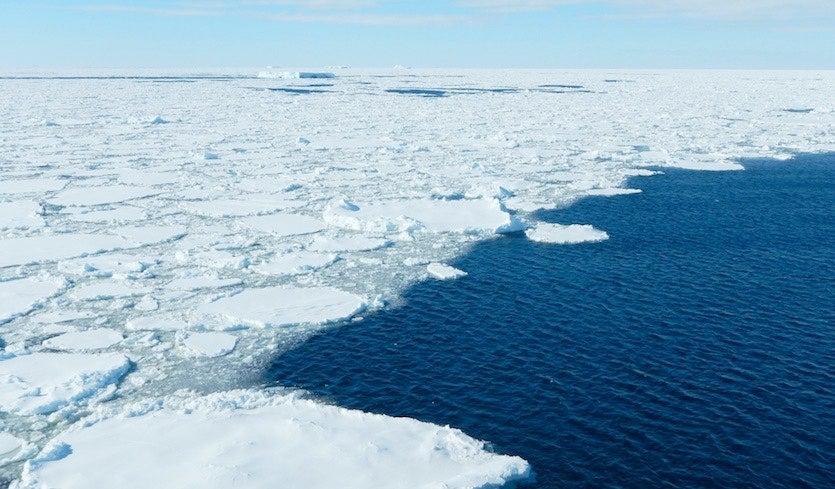
This year, Antarctic sea ice fell to a minimum extent of less than 2 million square kilometres, the lowest minimum extent recorded since satellite records started 43 years ago.
The National Snow and Ice Data Center (NSIDC) in the United States stated on 8 March that the minimal extent of 1.92 million square kilometres was attained on 25 February, which was 190,000 square kilometres less than the currently second-lowest extent, which was reached in 2017.
“The record low for total Antarctic sea ice occurred in a manner similar to the 2017 event,” says Ryan Fogt, a climatologist at Ohio University in Athens. “The record low for total Antarctic sea ice occurred in a manner similar to the 2017 event.” According to him, both episodes featured a maximum sea-ice extent that was earlier than typical, which was followed by quick reductions. For a few years after 2017, sea-ice coverage remained significantly below the historical norm, before rebounding to near-average levels in 2020.
Strong winds pushed ice out of the Ross Sea, a bay off the coast of Antarctica, and into places farther north, where it was warmer, contributing to the record low temperature in part. According to Walt Meier, a senior research scientist at the National Snow and Ice Data Center (NSIDC) headquartered at the University of Colorado Boulder, the ice broke up and melted there. “I believe that a significant portion, if not the entire occurrence, may be attributed to natural variability,” adds Meier.
Instead of declining rapidly since satellite measurements began in 1979 in the Arctic, Antarctic sea ice has experienced significant year-to-year variability (see “Lowest on record”), which is in contrast to predictions from some climate models that predicted it would decline as a result of increased greenhouse-gas emissions. Those years saw the greatest and second-highest Antarctic sea-ice minimums on record, respectively (3.69 million square kilometres and 3.69 million square kilometres) (3.68 million square kilometres). In 2015 and 2016, the bare minimum was significantly reduced. The fact that a record low may be set is not shocking, according to Meier, because there is so much unpredictability.
Sea ice will form wherever in Antarctica where the temperature is low enough for ice to form. As Fogt points out, “there are no land impediments in the road.” He goes on to say that without obstacles, the ice becomes more thinner, allowing it to be transported more easily by the wind and therefore cover a larger area.
‘Antarctic sea ice is highly responsive to the whims of the atmosphere and ocean,’ says Pat Langhorne, a researcher at the University of Otago in New Zealand who studies this type of ice. El Nio and La Nia patterns in the tropical Pacific Ocean, as well as wind direction and ocean swells, are all examples of what is included in this category.
As far as Meier can tell, Antarctica’s seclusion has so far kept most of the continent from experiencing warming, with the exception of the Antarctic Peninsula, which stretches out to the north and has seen significant warming over the past 40 years. He believes that global warming may have played a part in this new record, but that it is too soon to know.
It’s possible that this is the beginning of a sustained loss of Antarctic ice similar to what we’ve seen in the Arctic over the past 50 years, or it could be short-term variability that reverts back to the mean year, according to climate scientist Zeke Hausfather of Berkeley Earth in California. Climate change, he continues, will result in a reduction in Antarctic sea ice over the long run..





